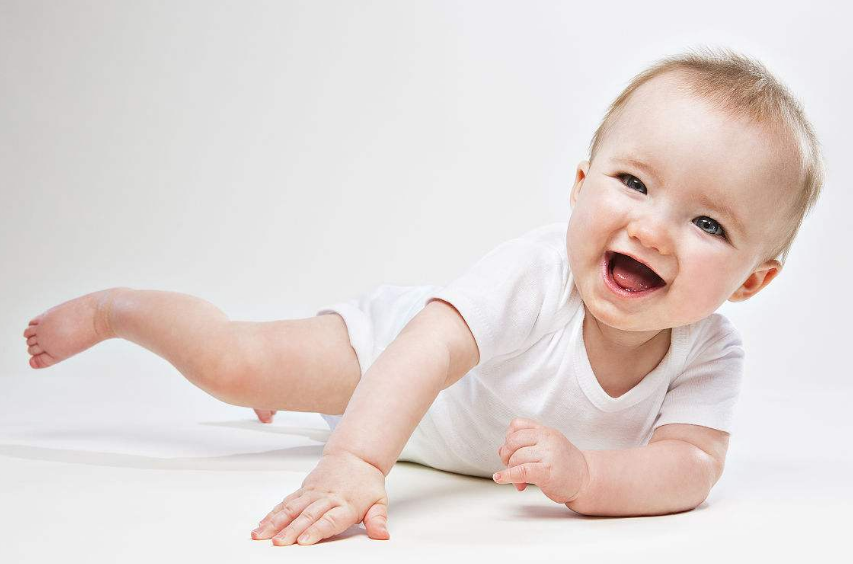Understand your baby’s performance from birth to six months
When the baby has hearing loss, after wearing the hearing aid, the parents are of course very concerned about the effect of the baby wearing a hearing aid, worrying about whether the baby hears the sound, hears clearly, and whether the hearing can develop normally. However, from birth to six months, the baby’s response and response to the sound is weak, and even after wearing the hearing aid, his or her performance is difficult to observe. This information will help you understand your baby’s performance.

How do you tell your baby to hear the sound?
The sound comes through learning, and the baby’s response to the sound will vary with age, development, and hearing loss. Remember, not responding to the sound does not mean that the baby can’t hear the sound.
From birth to two months, the normal hearing baby ignores the small sounds. Therefore, the response to the sound is not easy to observe. At this time, he or she hears the voice, and there may be a reaction, Zhang Da Eyes or wake up from sleep.
The baby’s response to different volume changes is related to the current mental activity. For example, in general, the baby’s auditory response in the light sleep state is the best, and it can respond or react to small sounds when compared to waking or good spirits.
Not all sounds can attract the attention of the baby. Some sounds can trigger the baby’s interest. For example, the newborn baby responds better to the voice, so you will find that in the home environment, he or she The response to whispering is better than the sound of other environments.
In addition, complex sounds are more attractive to your baby’s attention, such as the sound of a wave drum or music, which is better than a monophonic snoring or whistling response. It should be noted that if the same sound is repeated too many times, the baby will lose interest in the sound and stop responding or reacting to the sound. This situation is called adaptation.
If the baby has a significant hearing loss problem, when he is wearing a hearing aid, he may be unfamiliar with the surrounding environmental sounds, and cannot immediately see the reaction or response. It takes some time to adapt to observe the wearing effect.
The baby may respond to the sounds he or she hears by sounding. When the baby is just wearing a hearing aid, some of the babies may be quiet and focus on the sound, or become very vocal, as if testing the function of their hearing aids. Larger children may try to make a variety of different sounds after they wear hearing aids. Aisheng hearing aid
Observe the baby’s performance in the home
It is very difficult to calculate how much sound your baby can hear, but if you learn to observe the skills and understand how your baby responds or responds to the sound, you will be able to record the results of your daily observations in detail.
1. Please talk to your audiologist about your baby’s response to the voice and how it reacts.
Your baby’s ability to respond to sound is related to the degree of hearing loss and the effectiveness of the hearing aid. Ask your audiologist to explain their response to the baby and to respond to different voices.
Your audiologist will use a variety of different items to make sounds. Behavioural Observation Audiometry will detect your baby’s hearing and you will be able to observe your baby’s performance.
The table below will help you confirm your baby’s performance
年纪
|
Typical auditory performance
|
|
Born to 28 days |
Better response to nearby sounds |
|
There will be a shocking response to loud sounds |
|
|
For sudden sounds, you may have eyes or blinks, and painful expressions. |
|
|
Wake up or wake up by sound. Generally speaking, in the light sleep period, usually a small sound will wake up the baby; once you enter the sleeping state, you usually need a louder sound to wake the baby. |
|
|
The line of sight moves. A newborn baby may turn his or her eyes to a nearby source, and after one month, turn the line of sight and head to nearby sources. |
|
|
The body may become nervous due to certain sounds |
|
|
Extremities or fingers, toes may stretch out |
|
|
1-4 months |
When you hear the sound, you may have eyes, eyes, or frowns. |
|
The line of sight will turn to the sound source |
|
|
Hearing the sound may suddenly calm down and look nervous |
|
|
I will turn around and look for the sound source in about four months. |
|
|
4-7 months |
Directly turn to find the source |
|
Focus on sound |
If your baby is too agitated or tired, it is recommended not to test the hearing, because he or she may not understand the sound as expected, which may cause your frustration. In addition, if the same sound is tested too many times, the baby may not want to respond and react again, which is called adaptation. Therefore, parents should always be vigilant at all times to observe and record the baby’s ability to listen to sound in a natural situation.
When the environment is quiet and the baby is not swaying or sleeping, you will be able to easily observe the baby’s reaction to the sound, especially when the baby is very quiet or asleep, or when there is a sudden loud sound ( She) their response to the sound will be more obvious. If the environment in the home is very noisy, it is not easy to observe the baby’s performance of the sound.
It is important to note that parents must confirm that the baby’s response is a visual or auditory clue. For example, if you clap your hands in front of your baby, your baby will blink in the blink of an eye. This way you can’t confirm that the reaction is from sound or motion. Some babies may use their olfactory clues to identify the taste of their parents’ perfume or shaving water, and they know that their parents are approaching him or her.
The following questions can guide you to observe and record how your baby reacts to sound.
1. Can you observe how several babies react to sound?
2. Does the baby have a favorite or disliked sound?
3. Is the baby’s reaction to a small, medium volume, as good as a loud response?
4. During the day, did the baby respond particularly well at a certain time? (This time is very suitable for interactive games and talking with the baby)
5. For the first time wearing a hearing aid, talk to your baby and record the reaction you observed.
6. When the baby wears a hearing aid, the baby changes more often than before.
Please record the baby’s daily listening response, which will help to understand the progress of the baby’s listening ability, and help the teacher of the audiologist and the early treatment team to understand the baby’s condition.
3. Please discuss with your audiologist the changes you have observed, including your concerns and problems. The information you observe on a daily basis is very important and can provide the hearing specialist with a more favorable judgment on the subsequent fine adjustment of the hearing aid.
Link:How to know what the baby heard and parents observe daily
REF: Hearing Aids, ITE hearing aids, Hearing Aids TypesThe article comes from the Internet. If there is any infringement, please contact [email protected] to delete it.



